2001 MCM A: Choosing a Bicycle Wheel
Cyclists have different types of wheels they can use on their bicycles.
The two basic types of wheels are those constructed using wire spokes and
those constructed of a solid disk (see Figure 1) The spoked wheels are
lighter, but the solid wheels are more aerodynamic. A solid wheel is never
used on the front for a road race but can be used on the rear of the bike.
Professional cyclists look at a racecourse and make an educated guess as
to what kind of wheels should be used. The decision is based on the number
and steepness of the hills, the weather, wind speed, the competition, and
other considerations. The director sportif of your favorite team would
like to have a better system in place and has asked your team for
information to help determine what kind of wheel should be used for a given
course.
Figure 1: A solid wheel is shown on the left and a spoked wheel is shown
on the right.
The director sportif needs specific information to help make a decision
and has asked your team to accomplish the tasks listed below. For each
of the tasks assume that the same spoked wheel will always be used on the
front but there is a choice of wheels for the rear.
Task 1. Provide a table giving the wind speed at which the power
required for a solid rear wheel is less than for a spoked rear wheel.
The table should include the wind speeds for different road grades
starting from zero percent to ten percent in one percent increments.
(Road grade is defined to be the ratio of the total rise of a hill
divided by the length of the road. If the hill is viewed as a triangle,
the grade is the sine of the angle at the bottom of the hill.) A
rider starts at the bottom of the hill at a speed of 45 kph, and
the deceleration of the rider is proportional to the road grade.
�
A rider will lose about 8 kph for a five percent grade over 100
meters.
Task 2. Provide an example of how the table could be used for a
specific time trial course.
Task 3. Determine if the table is an adequate means for deciding
on the wheel configuration and offer other suggestions as to how
to make this decision.
2001 MCM B: Escaping a Hurricane's Wrath (An Ill
Wind...)
Evacuating the coast of South Carolina ahead of the predicted landfall
of Hurricane Floyd in 1999 led to a monumental traffic jam. Traffic slowed
to a standstill on Interstate I-26, which is the principal route going
inland from Charleston to the relatively safe haven of Columbia in the
center of the state. What is normally an easy two-hour drive took up to
18 hours to complete. Many cars simply ran out of gas along the way.
Fortunately, Floyd turned north and spared the state this time, but the
public outcry is forcing state officials to find ways to avoid a repeat
of this traffic nightmare.
The principal proposal put forth to deal with this problem is the reversal
of traffic on I-26, so that both sides, including the coastal-bound lanes,
have traffic headed inland from Charleston to Columbia. Plans to carry
this out have been prepared (and posted on the Web) by the South Carolina
Emergency Preparedness Division. Traffic reversal on principal roads
leading inland from Myrtle Beach and Hilton Head is also planned.
A simplified map of South Carolina is shown. Charleston has approximately
500,000 people, Myrtle Beach has about 200,000 people, and another 250,000
people are spread out along the rest of the coastal strip. (More accurate
data, if sought, are widely available.)
The interstates have two lanes of traffic in each direction except in the
metropolitan areas where they have three. Columbia, another metro area
of around 500,000 people, does not have sufficient hotel space to
accommodate the evacuees (including some coming from farther north by
other routes), so some traffic continues outbound on I-26 towards
Spartanburg; on I-77 north to Charlotte; and on I-20 east to Atlanta. In
1999, traffic leaving Columbia going northwest was moving only very slowly.
Construct a model for the problem to investigate what strategies may
reduce the congestion observed in 1999. Here are the questions that need
to be addressed:
�
1. Under what conditions does the plan for turning the two
coastal-bound lanes of I-26 into two lanes of Columbia-bound
traffic, essentially turning the entire I-26 into one-way traffic,
significantly improve evacuation traffic flow?
2. In 1999, the simultaneous evacuation of the state's entire coastal
region was ordered. Would the evacuation traffic flow improve under
an alternative strategy that staggers the evacuation, perhaps
county-by-county over some time period consistent with the pattern
of how hurricanes affect the coast?
3. Several smaller highways besides I-26 extend inland from the coast.
Under what conditions would it improve evacuation flow to turn
around traffic on these?
4. What effect would it have on evacuation flow to establish more
temporary shelters in Columbia, to reduce the traffic leaving
Columbia?
5. In 1999, many families leaving the coast brought along their boats,
campers, and motor homes. Many drove all of their cars. Under what
conditions should there be restrictions on vehicle types or numbers
of vehicles brought in order to guarantee timely evacuation?
6. It has been suggested that in 1999 some of the coastal residents
of Georgia and Florida, who were fleeing the earlier predicted
landfalls of Hurricane Floyd to the south, came up I-95 and
compounded the traffic problems. How big an impact can they have
on the evacuation traffic flow? Clearly identify what measures of
performance are used to compare strategies. Required: Prepare a
short newspaper article, not to exceed two pages, explaining the
results and conclusions of your study to the public.
Clearly identify what measures of performance are used to compare
strategies.
Required: Prepare a short newspaper article, not to exceed two pages,
explaining the results and conclusions of your study to the public.
�
2002 MCM A: Wind and Waterspray
An ornamental fountain in a large open plaza surrounded by buildings
squirts water high into the air. On gusty days, the wind blows spray from
the fountain onto passersby. The water-flow from the fountain is
controlled by a mechanism linked to an anemometer (which measures wind
speed and direction) located on top of an adjacent building. The objective
of this control is to provide passersby with an acceptable balance between
an attractive spectacle and a soaking: The harder the wind blows, the lower
the water volume and height to which the water is squirted, hence the less
spray falls outside the pool area.
Your task is to devise an algorithm which uses data provided by the
anemometer to adjust the water-flow from the fountain as the wind
conditions change.
2002 MCM B: Airline Overbooking
You'reallpackedandreadytogoonatriptovisityourbestfriendin
NewYorkCity.Afteryoucheckinattheticketcounter,theairlineclerk
announcesthatyourflighthasbeenoverbooked.Passengersneedtocheck
in immediately to determine if they still have a seat.
�
Historically, airlines know that only a certain percentage of passengers
who have made reservations on a particular flight will actually take that
flight. Consequently, most airlines overbook-that is, they take more
reservations than the capacity of the aircraft. Occasionally, more
passengers will want to take a flight than the capacity of the plane
leading to one or more passengers being bumped and thus unable to take
the flight for which they had reservations.
Airlines deal with bumped passengers in various ways. Some are given
nothing, some are booked on later flights on other airlines, and some are
given some kind of cash or airline ticket incentive.
Consider the overbooking issue in light of the current situation: Less
flights by airlines from point A to point B Heightened security at and
around airports Passengers' fear Loss of billions of dollars in revenue
by airlines to date
Build a mathematical model that examines the effects that different
overbooking schemes have on the revenue received by an airline company
in order to find an optimal overbooking strategy, i.e., the number of
people by which an airline should overbook a particular flight so that
the company's revenue is maximized. Insure that your model reflects the
issues above, and consider alternatives for handling“bumped”passengers.
Additionally, write a short memorandum to the airline's CEO summarizing
your findings and analysis.
2003 MCM A: The Stunt Person
An exciting action scene in a movie is going to be filmed, and you are
the stunt coordinator! A stunt person on a motorcycle will jump over an
elephant and land in a pile of cardboard boxes to cushion their fall. You
need to protect the stunt person, and also use relatively few cardboard
boxes (lower cost, not seen by camera, etc.).
Your job is to:
determine what size boxes to use
determine how many boxes to use
determine how the boxes will be stacked
determine if any modifications to the boxes would help
generalize to different combined weights (stunt person & motorcycle)
and different jump heights
�
Note that, in “Tomorrow Never Dies”, the James Bond character on a
motorcycle jumps over a helicopter.
2003 MCM B: Gamma Knife Treatment Planning
Stereotactic radiosurgery delivers a single high dose of ionizing
radiation to a radiographically well-defined, small intracranial 3D brain
tumor without delivering any significant fraction of the prescribed dose
to the surrounding brain tissue. Three modalities are commonly used in
this area; they are the gamma knife unit, heavy charged particle beams,
and external high-energy photon beams from linear accelerators.
The gamma knife unit delivers a single high dose of ionizing radiation
emanating from 201 cobalt-60 unit sources through a heavy helmet. All 201
beams simultaneously intersect at the isocenter, resulting in a spherical
(approximately) dose distribution at the effective dose levels.
Irradiating the isocenter to deliver dose is termed a “shot.” Shots can
be represented as different spheres. Four interchangeable outer
collimator helmets with beam channel diameters of 4, 8, 14, and 18 mm are
available for irradiating different size volumes. For a target volume
larger than one shot, multiple shots can be used to cover the entire target.
In practice, most target volumes are treated with 1 to 15 shots. The target
volume is a bounded, three-dimensional digital image that usually
consists of millions of points.
The goal of radiosurgery is to deplete tumor cells while preserving normal
structures. Since there are physical limitations and biological
uncertainties involved in this therapy process, a treatment plan needs
to account for all those limitations and uncertainties. In general, an
optimal treatment plan is designed to meet the following requirements.
1. Minimize the dose gradient across the target volume.
2. Match specified isodose contours to the target volumes.
3. Match specified dose-volume constraints of the target and critical
organ.
4. Minimize the integral dose to the entire volume of normal tissues
or organs.
5. Constrain dose to specified normal tissue points below tolerance
doses.
6. Minimize the maximum dose to critical volumes.
In gamma unit treatment planning, we have the following constraints:
1. Prohibit shots from protruding outside the target.
�
2. Prohibit shots from overlapping (to avoid hot spots).
3. Cover the target volume with effective dosage as much as possible.
But at least 90% of the target volume must be covered by shots.
4. Use as few shots as possible.
Your tasks are to formulate the optimal treatment planning for a gamma
knife unit as a sphere-packing problem, and propose an algorithm to find
a solution. While designing your algorithm, you must keep in mind that
your algorithm must be reasonably efficient.
2004 MCM A: Are Fingerprints Unique?
It is a commonplace belief that the thumbprint of every human who has ever
lived is different. Develop and analyze a model that will allow you to
assess the probability that this is true. Compare the odds (that you found
in this problem) of misidentification by fingerprint evidence against the
odds of misidentification by DNA evidence.
2004 MCM B: A Faster QuickPass System
“QuickPass” systems are increasingly appearing to reduce people's time
waiting in line, whether it is at tollbooths, amusement parks, or
elsewhere. Consider the design of a QuickPass system for an amusement park.
The amusement park has experimented by offering QuickPasses for several
popular rides as a test. The idea is that for certain popular rides you
can go to a kiosk near that ride and insert your daily park entrance ticket,
and out will come a slip that states that you can return to that ride at
a specific time later. For example, you insert your daily park entrance
ticket at 1:15 pm, and the QuickPass states that you can come back between
3:30 and 4:30 pm when you can use your slip to enter a second, and
presumably much shorter, line that will get you to the ride faster. To
prevent people from obtaining QuickPasses for several rides at once, the
QuickPass machines allow you to have only one active QuickPass at a time.
You have been hired as one of several competing consultants to improve
the operation of QuickPass. Customers have been complaining about some
anomalies in the test system. For example, customers observed that in one
instance QuickPasses were being offered for a return time as long as 4
hours later. A short time later on the same ride, the QuickPasses were
given for times only an hour or so later. In some instances, the lines
for people with Quickpasses are nearly as long and slow as the regular
lines.
�
The problem then is to propose and test schemes for issuing QuickPasses
in order to increase people's enjoyment of the amusement park. Part of
the problem is to determine what criteria to use in evaluating alternative
schemes. Include in your report a non-technical summary for amusement park
executives who must choose between alternatives from competing
consultants.
2005 MCM A: Flood Planning
Lake Murray in central South Carolina is formed by a large earthen dam,
which was completed in 1930 for power production. Model the flooding
downstream in the event there is a catastrophic earthquake that breaches
the dam.
Two particular questions:
Rawls Creek is a year-round stream that flows into the Saluda River a short
distance downriver from the dam. How much flooding will occur in Rawls
Creek from a dam failure, and how far back will it extend?
Could the flood be so massive downstream that water would reach up to the
S.C. State Capitol Building, which is on a hill overlooking the Congaree
River?
2005 MCM B: Tollbooths
Heavily-traveled toll roads such as the Garden State Parkway, Interstate
95, and so forth, are multi-lane divided highways that are interrupted
at intervals by toll plazas. Because collecting tolls is usually unpopular,
it is desirable to minimize motorist annoyance by limiting the amount of
traffic disruption caused by the toll plazas. Commonly, a much larger
number of tollbooths is provided than the number of travel lanes entering
the toll plaza. Upon entering the toll plaza, the flow of vehicles fans
out to the larger number of tollbooths, and when leaving the toll plaza,
the flow of vehicles is required to squeeze back down to a number of travel
lanes equal to the number of travel lanes before the toll plaza.
Consequently, when traffic is heavy, congestion increases upon departure
from the toll plaza. When traffic is very heavy, congestion also builds
at the entry to the toll plaza because of the time required for each vehicle
to pay the toll.
Make a model to help you determine the optimal number of tollbooths to
deploy in a barrier-toll plaza. Explicitly consider the scenario where
�
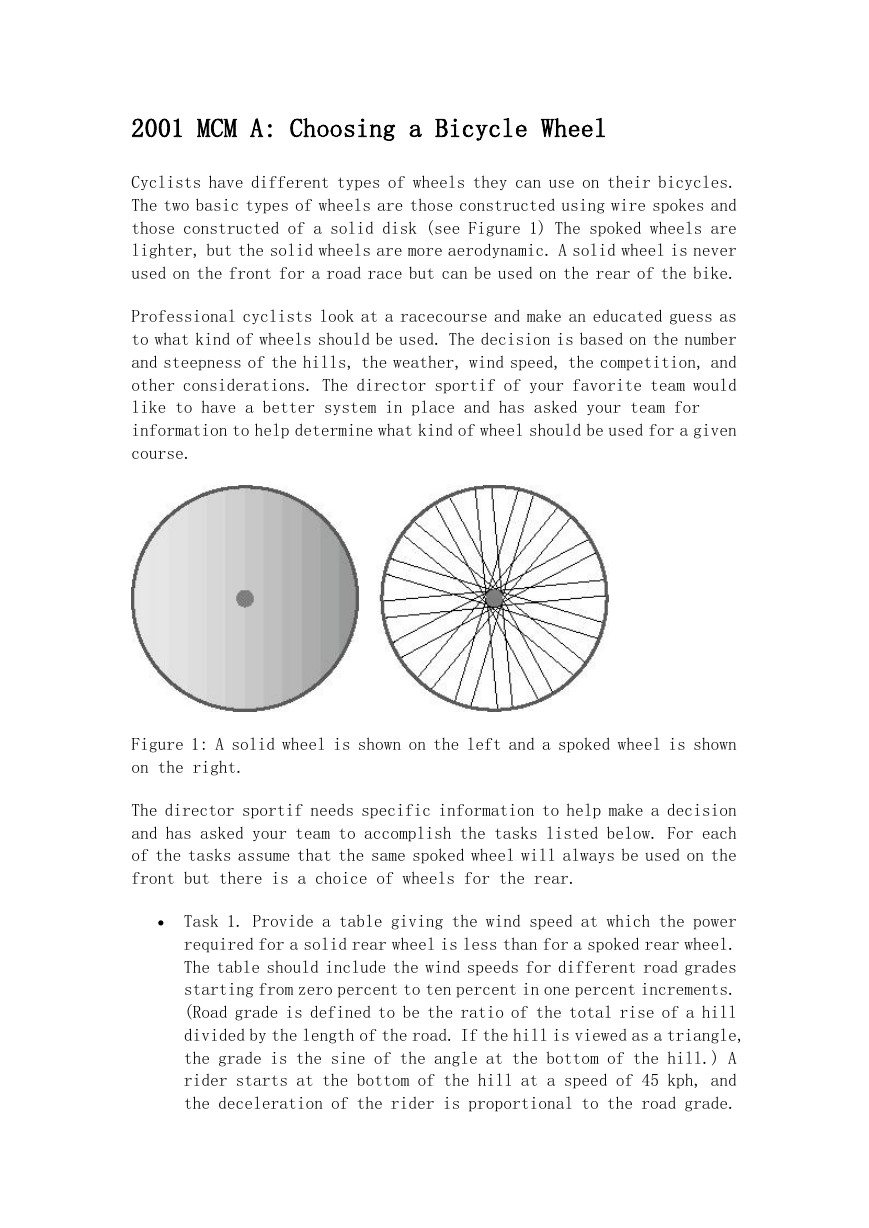
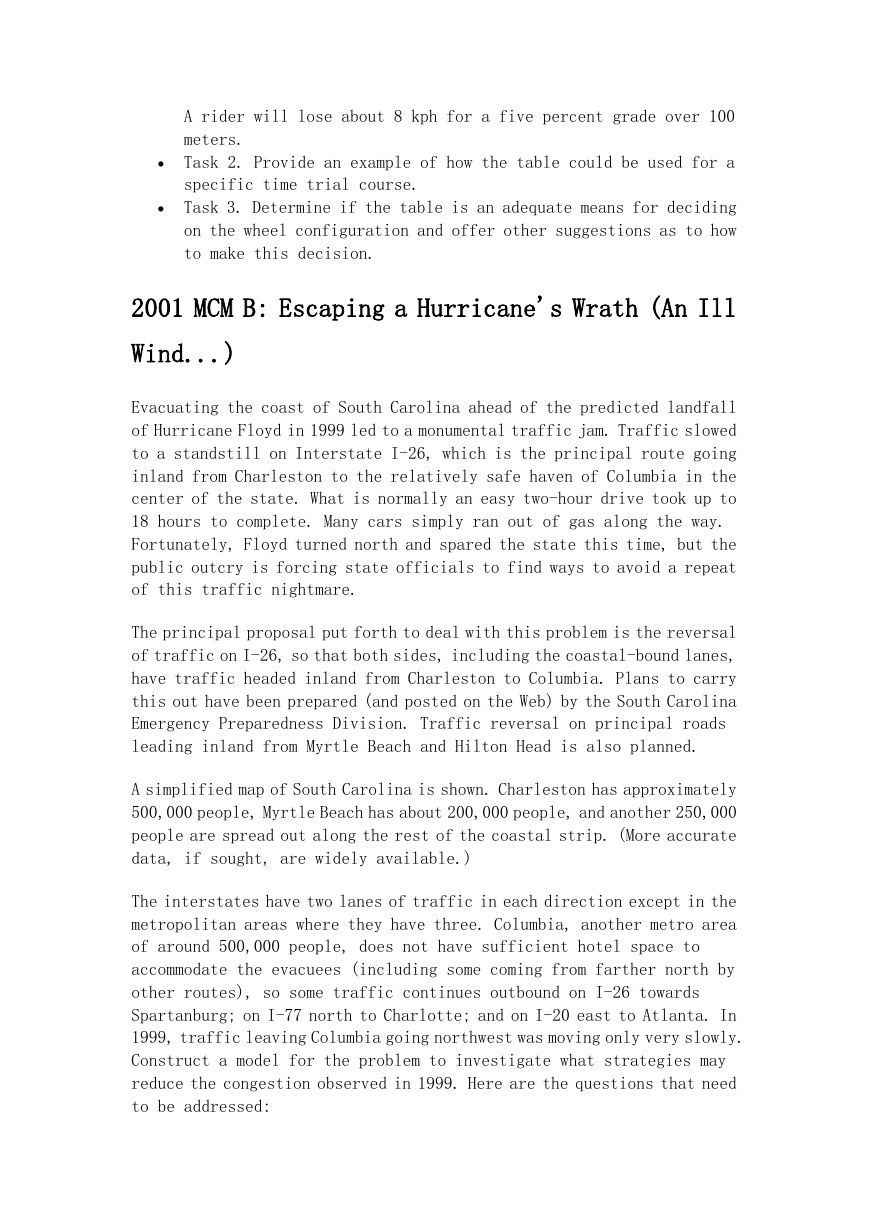
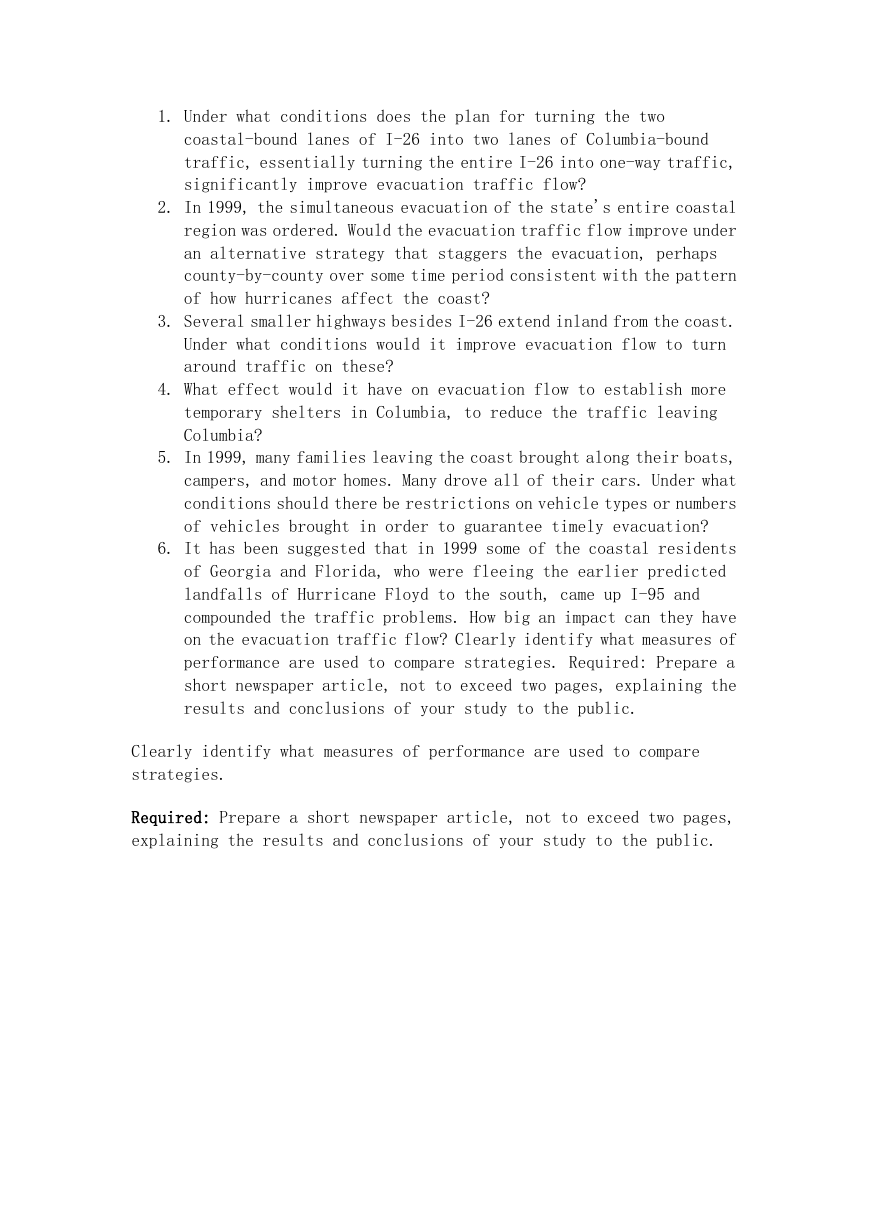
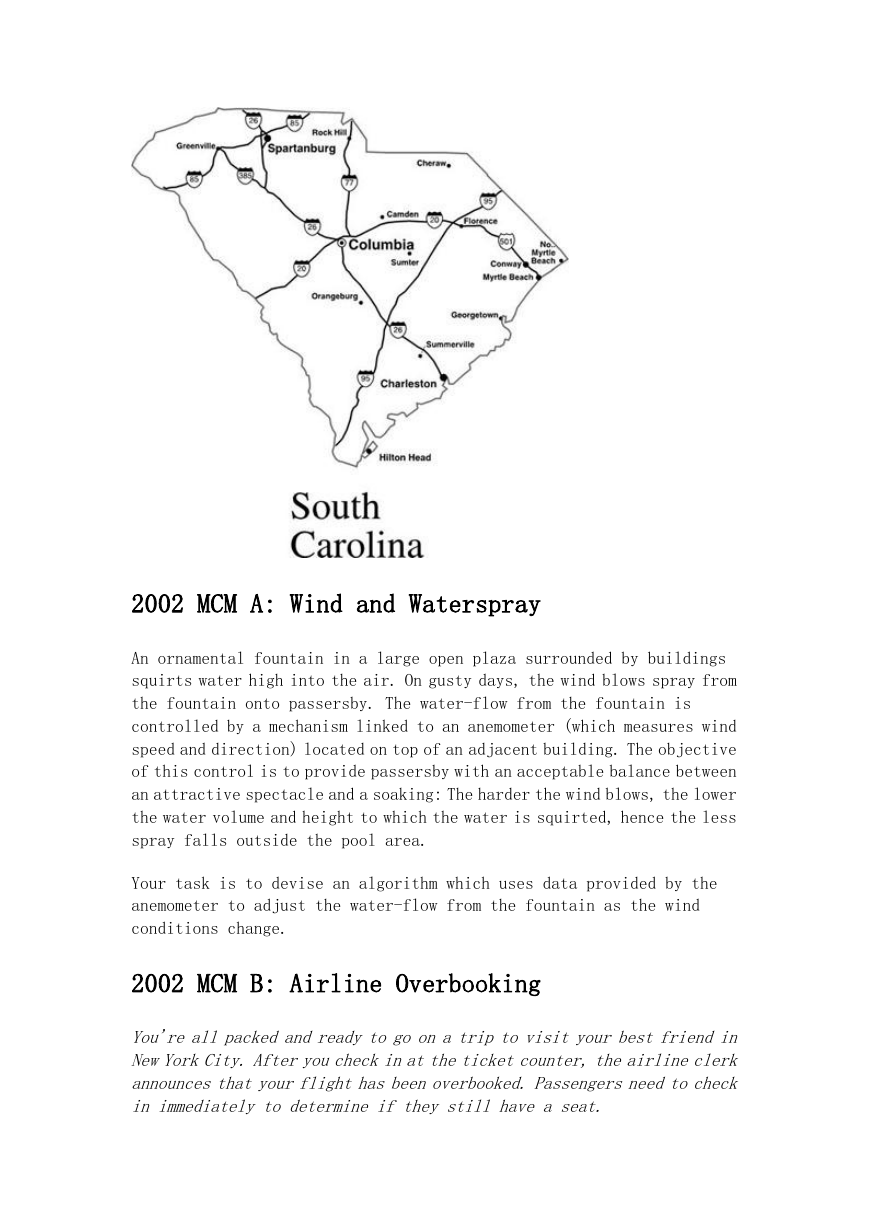
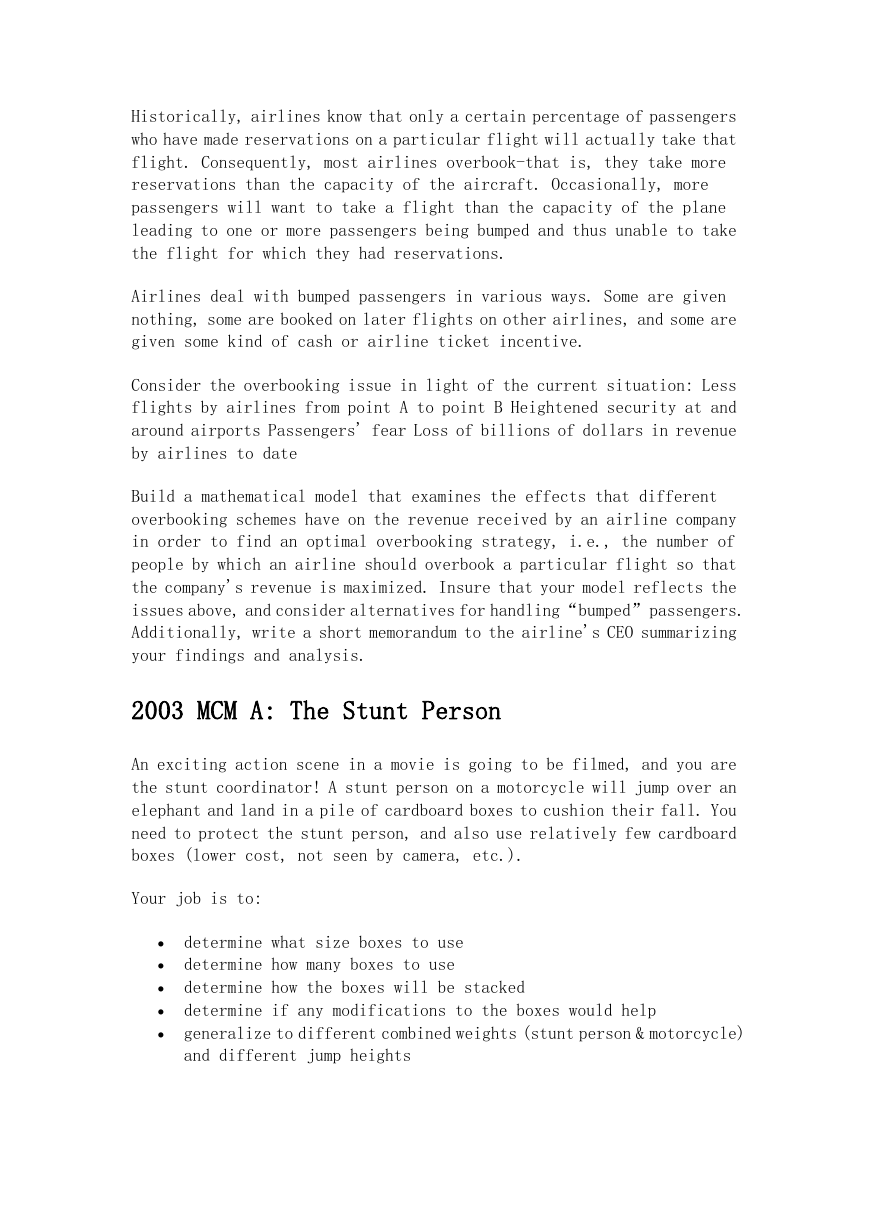

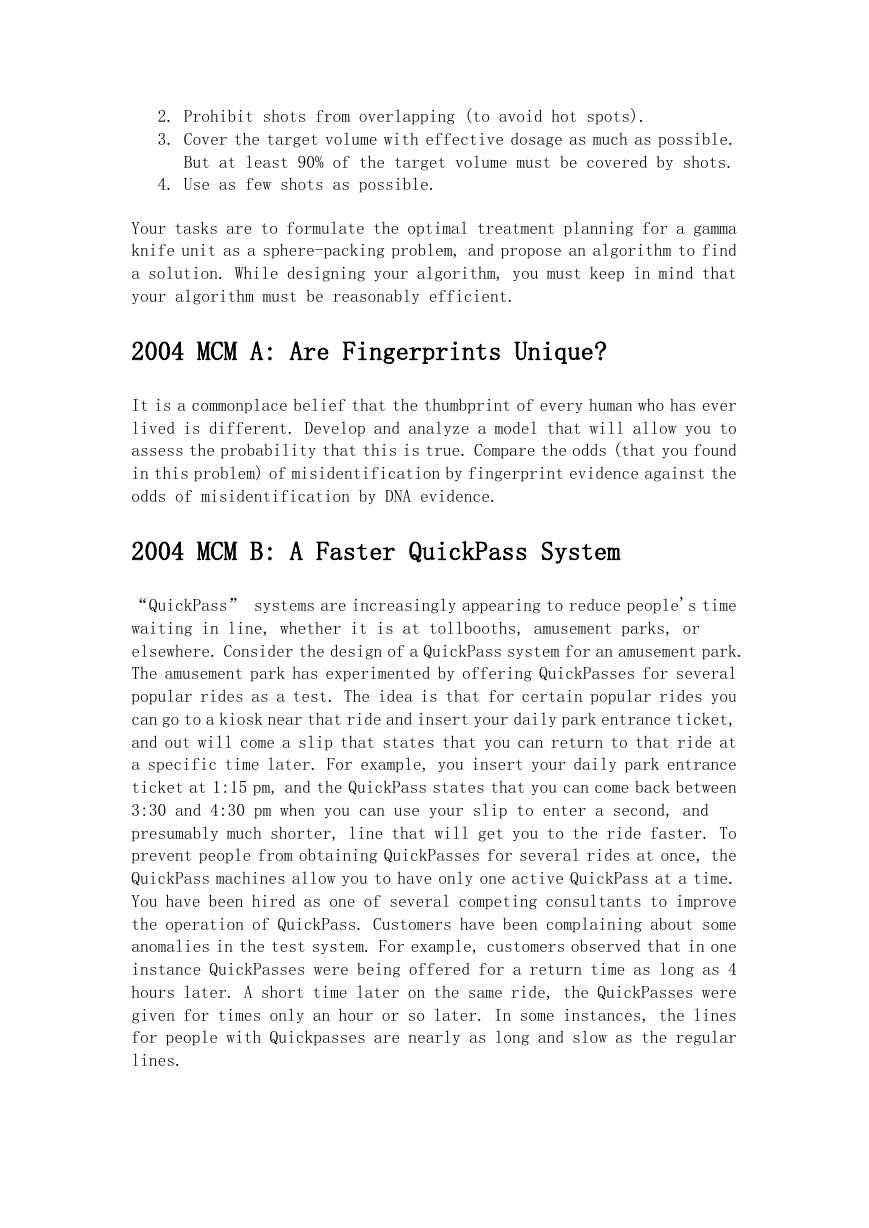
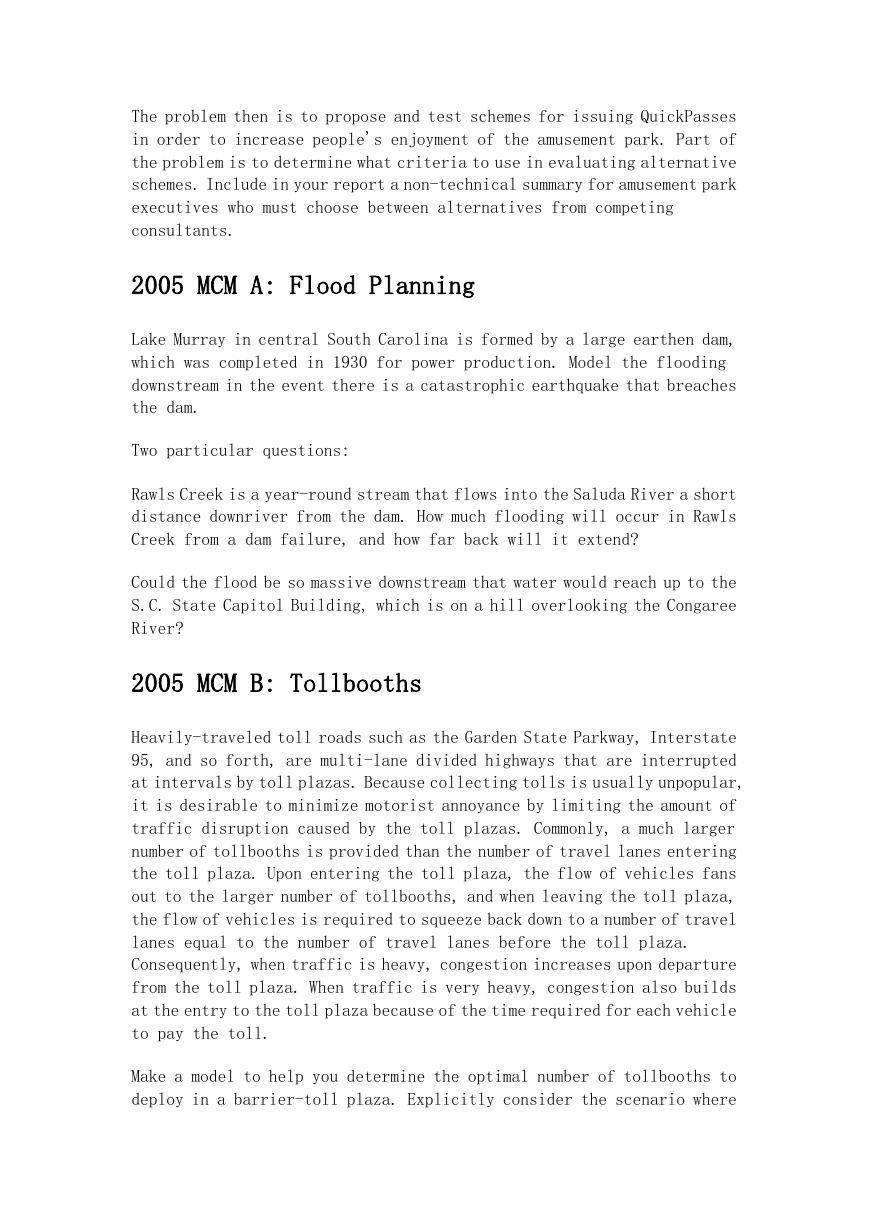








 2023年江西萍乡中考道德与法治真题及答案.doc
2023年江西萍乡中考道德与法治真题及答案.doc 2012年重庆南川中考生物真题及答案.doc
2012年重庆南川中考生物真题及答案.doc 2013年江西师范大学地理学综合及文艺理论基础考研真题.doc
2013年江西师范大学地理学综合及文艺理论基础考研真题.doc 2020年四川甘孜小升初语文真题及答案I卷.doc
2020年四川甘孜小升初语文真题及答案I卷.doc 2020年注册岩土工程师专业基础考试真题及答案.doc
2020年注册岩土工程师专业基础考试真题及答案.doc 2023-2024学年福建省厦门市九年级上学期数学月考试题及答案.doc
2023-2024学年福建省厦门市九年级上学期数学月考试题及答案.doc 2021-2022学年辽宁省沈阳市大东区九年级上学期语文期末试题及答案.doc
2021-2022学年辽宁省沈阳市大东区九年级上学期语文期末试题及答案.doc 2022-2023学年北京东城区初三第一学期物理期末试卷及答案.doc
2022-2023学年北京东城区初三第一学期物理期末试卷及答案.doc 2018上半年江西教师资格初中地理学科知识与教学能力真题及答案.doc
2018上半年江西教师资格初中地理学科知识与教学能力真题及答案.doc 2012年河北国家公务员申论考试真题及答案-省级.doc
2012年河北国家公务员申论考试真题及答案-省级.doc 2020-2021学年江苏省扬州市江都区邵樊片九年级上学期数学第一次质量检测试题及答案.doc
2020-2021学年江苏省扬州市江都区邵樊片九年级上学期数学第一次质量检测试题及答案.doc 2022下半年黑龙江教师资格证中学综合素质真题及答案.doc
2022下半年黑龙江教师资格证中学综合素质真题及答案.doc